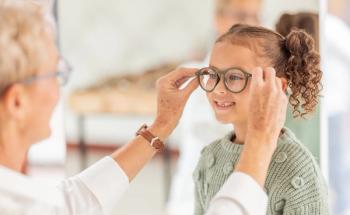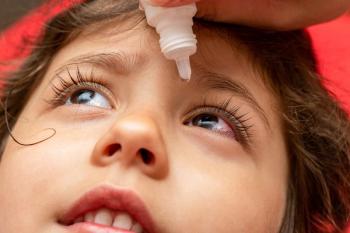
- March digital edition 2022
- Volume 14
- Issue 3
5 reasons optometrists have failed to embrace myopia management
Some optometrists are reluctant to incorporate myopia control into practice. With global cases on the rise, the time to act is now.
Once thought of as a benign inconvenience to be addressed through vision correction, myopia is now understood to be a progressive disease that requires early intervention to avoid sight-threatening complications later in life.1-3
The prevalence of myopia is increasing. Among young adults the rate is more than 80% in parts of Asia4 and 50% in parts of Europe and the United States.5,6 We know that the elongated eye is susceptible to pathological complications that come with significant visual and ocular health risks in adulthood.7-9 For example, each diopter increase in myopia results in 67% increased risk of myopic macular degeneration.10
With numerous available treatment options and new technologies proven to slow the progression of myopia and correct vision, optometrists have a massive opportunity to manage these patients.
A recent
So what are some of the common barriers holding optometrists back, and how can those interested get started managing myopia?
5 common objections to managing myopia
There are a number of reasons optometrists may be reluctant to incorporate myopia management into their practice, including the following:
1. skepticism regarding the effectiveness of myopia control strategies;
2. concern over chair time;
3. intimidation of fitting the lens technology;
4. worries about safety of children sleeping in contact lenses; and
5. uncertainty about how to talk about myopia management and its cost.
There is a lack of understanding around the science of myopia, awareness of the risks, and the efficacy of treatment.11 Some optometrists may not understand the importance of axial length (AL) growth and its association with higher myopic defocus. AL—the combination of anterior chamber depth, lens thickness, and vitreous chamber depth—is the most significant contributor to refractive error.12
Myopia occurs when AL increases at a greater rate than that expected for age. Children with an AL more than 26 mm have a greater risk of myopic macular degeneration and retinal detachment. I have adult patients with high myopia who are dealing with early cataracts and torn retinas. We should be starting to address this condition when kids are young so we can prevent these outcomes.
Selling eyeglasses generates revenue; some practices see as much as 80% revenue from the optical business. Although this may make some eye care providers hesitant to change their mode, I do not believe this is a valid deterrent. We took an oath as health care providers to do no harm. If we are not offering myopia management options to children, there may indeed be repercussions later in life.
Plus, with the increasing competition from online eyeglass retailers, I believe now is the perfect time to add myopia management to a practice and get away from reliance on the optical business. Myopia management is a niche that optometrists are uniquely positioned to fill.
Talking to parents
When I discuss myopia management and orthokeratology (ortho-k) with parents, I prepare them by explaining the concepts in a relatable way. I tell them that ortho means straightening and keratology refers to the cornea, so ortho-k is a way to straighten the cornea to temporarily correct myopia and to reduce the risk of progression. Sometimes I make a dental analogy, saying it is akin to what an orthodontist can do for teeth. This helps parents understand the concept and prepares them for the fact that there will be a cost associated with the treatment.
It is generally OK to use technical terms with parents to discuss AL and how that plays a role in myopia. Explain the concept of peripheral hyperopic defocus and how it is a stimulus for eye growth. Finally, discuss how the mold will help gently reshape the cornea so the light rays will be more aligned to their eye, correct their vision, and reduce this hyperopic defocus.
Although I do not want to scare parents, I do want them to understand that there are long-term ocular health benefits to managing myopia. During an exam the child may have progressed from -1.00 D to -3.00 diopter (D) of myopia in a year, and the parents may feel guilty that they did not do something sooner. I reassure them, letting them know there are treatment options for their child. It is important to be confident when speaking. The next step is setting up a formal consultation.
During the consultation is when AL and other factors are determined, and I decide what technology best suits the patient’s needs. I find that doing much of the communication via email helps save chair time as they are likely going to have a lot of questions. I include links and articles about myopia control and ortho-k, safety studies, and more about what myopia is to help them understand the implications.
My protocols include speaking with parents about lifestyle modifications—particularly the importance of outside time, which can delay the onset of myopia and slow its progression.13,14 Other recommendations include limiting screen time, adjusting to the proper distance for working on a computer and other devices, and taking frequent breaks. I also offer atropine therapy; 0.05% atropine has been found to be the optimal concentration among the studied atropine concentrations in slowing myopia progression.15
Myopia management is about building trust with parents and letting them know you are committed to caring for their child. I also let them know my own kids use such lenses.
Available technologies
In my practice, I offer multifocal soft lenses including NaturalVue (Visioneering Technologies) as well as Biofinity and MiSight (CooperVision). Johnson & Johnson Vision (JJV) is growing its portfolio of myopia management solutions, with its Acuvue Abiliti 1-Day Soft Therapeutic Lenses for Myopia Management recently made available in Canada.
For rigid gas permeable (RGP)-based ortho-K, I favor new-generation lenses. I am one of the first optometrists in New York to be fitting JJV’s newly FDA-approved Acuvue Abiliti Overnight Therapeutic Lenses for Myopia Management. The company’s user-friendly FitAbiliti software tool guides the practitioner through the fitting and follow-up process, providing a precise measure of the corneal shape. The tool helps ensure professionals achieve an accurate fit for optimal success. They can be ordered directly from the company’s cloud-based system, and the process makes it ideal for first-time practitioners.
I also use technologies such as Euclid MAX (Euclid Systems Corporation) made with breathable material and the iSee (GP Specialists). Customizable technology includes WAVE NightLens (Bausch + Lomb) and EyeSpace (Innovatus Technology).
I advise new practitioners to be conservative with patient selection early on: Do not try to tackle a child who is -6.00 D or higher or those with irregular topography. Rather, aim for those in the -2.00 to -3.00 D range to really knock it out of the park and gain confidence. It helps to book consults and fitting visits at the end of the day because they take about an hour.
The speed of improvement depends on the refractive error. Although every child might not be seeing 20/20 after the first night, some new technologies do show results that quickly. Set proper expectations and stay in frequent communication with patients. I ask parents to text me to let me know how the child did that first night and how their vision is the next day. I like patients to start on a Friday night, so by Monday they can go to school without glasses.
Join the conversation
To be successful with myopia control, you need to be passionate about it. The first thing I tell optometrists who are interested in incorporating myopia management in their practice is to start by joining the conversation.
Eye care providers can become members of the American Academy of Orthokeratology and Myopia Control, attend a meeting, and learn the basics to see if adding these services is right for them. The group has a number of resources available about myopia management and ortho-k as well as boot camps to help get started. When attending a meeting, speak with contact lens representatives and consultants. Learn about their products, as their knowledge is invaluable.
References
1. Flitcroft DI. The complex interactions of retinal, optical and environmental factors in myopia aetiology. Prog Retin Eye Res. 2012;31(6):622-660. doi:10.1016/j.preteyeres.2012.06.004
2. Donovan L, Sankaridurg P, Ho A, Naduvilath T, Smith EL 3rd, Holden BA. Myopia progression rates in urban children wearing single-vision spectacles. Optom Vis Sci. 2012;89(1):27-32. doi:10.1097/OPX.0b013e3182357f79
3. Pärssinen O, Kauppinen M. Risk factors for high myopia: a 22-year follow-up study from childhood to adulthood. Acta Ophthalmol. 2019;97(5):510-518. doi:10.1111/aos.13964
4. Ding BY, Shih YF, Lin LLK, Hsiao CK, Wang IJ. Myopia among schoolchildren in East Asia and Singapore. Surv Ophthalmol. 2017;62(5):677-697. doi:10.1016/j.survophthal.2017.03.006
5. Vitale S, Ellwein L, Cotch MF, Ferris FL 3rd, Sperduto R. Prevalence of refractive error in the United States, 1999-2004. Arch Ophthalmol. 2008;126(8):1111-1119. doi:10.1001/archopht.126.8.1111
6. Williams K, Bertelsen G, Cumberland P, et al. Increasing prevalence of myopia in Europe and the impact of education. Ophthalmology. 2015;122(7):1489-1497. doi:10.1016/j.ophtha.2015.03.018
7. Haarman AEG, Enthoven CA, Tideman JWL, Tedja MS, Verhoeven VJM, Klaver CCW. The complications of myopia: a review and meta-analysis. Invest Ophthalmol Vis Sci. 2020;61(4):49. doi:10.1167/iovs.61.4.49
8. Tideman JW, Snabel MC, Tedja MS, et al. Association of axial length with risk of uncorrectable visual impairment for Europeans with myopia. JAMA Ophthalmol. 2016;134(12):1355-1363. doi:10.1001/jamaophthalmol.2016.4009
9. Perkins ES. Morbidity from myopia. Sight Sav Rev. 1979;49(1):11-19.
10. Bullimore MA, Brennan NA. Myopia-control: why each diopter matters. Optom Vis Sci. 2019;96(6):463-465. doi:10.1097/OPX.0000000000001367
11. Vincent SJ, Cho P, Chan KY, et al. CLEAR - orthokeratology. Cont Lens Anterior Eye. 2021;44(2):240-269. doi:10.1016/j.clae.2021.02.003
12. Mutti DO, Hayes JR, Mitchell GL, et al. Refractive error, axial length, and relative peripheral refractive error before and after the onset of myopia. Invest Ophthalmol Vis Sci. 2007;48(6):2510-2519. doi:10.1167/iovs.06-0562
13. He M, Xiang F, Zeng Y, et al. Effect of time spent outdoors at school on the development of myopia among children in China: a randomized clinical trial. JAMA. 2015;314(11):1142-1148. doi:10.1001/jama.2015.10803
14. Wu PC, Chen CT, Lin KK, et al. Myopia prevention and outdoor light intensity in a school-based cluster randomized trial. Ophthalmology. 2018;125(8):1239-1250. doi:10.1016/j.ophtha.2017.12.011
15. Yam JC, Li FF, Zhang X, et al. Two-year clinical trial of the Low-Concentration Atropine for Myopia Progression (LAMP) Study. Phase 2 report. Ophthalmology. 2020;127(7):910-919. doi:10.1016/j.ophtha.2019.12.011
Articles in this issue
over 3 years ago
Keeping calm with positive vibesover 3 years ago
5 diabetes truisms that are (at least partially) falseover 3 years ago
Addressing the need for greater access in vision careover 3 years ago
Tackling the problem of contact lens dropout from presbyopiaover 3 years ago
The ideal glaucoma patient, from an optometrist’s perspectiveover 3 years ago
Restoring sight against all oddsNewsletter
Want more insights like this? Subscribe to Optometry Times and get clinical pearls and practice tips delivered straight to your inbox.















































.png)


